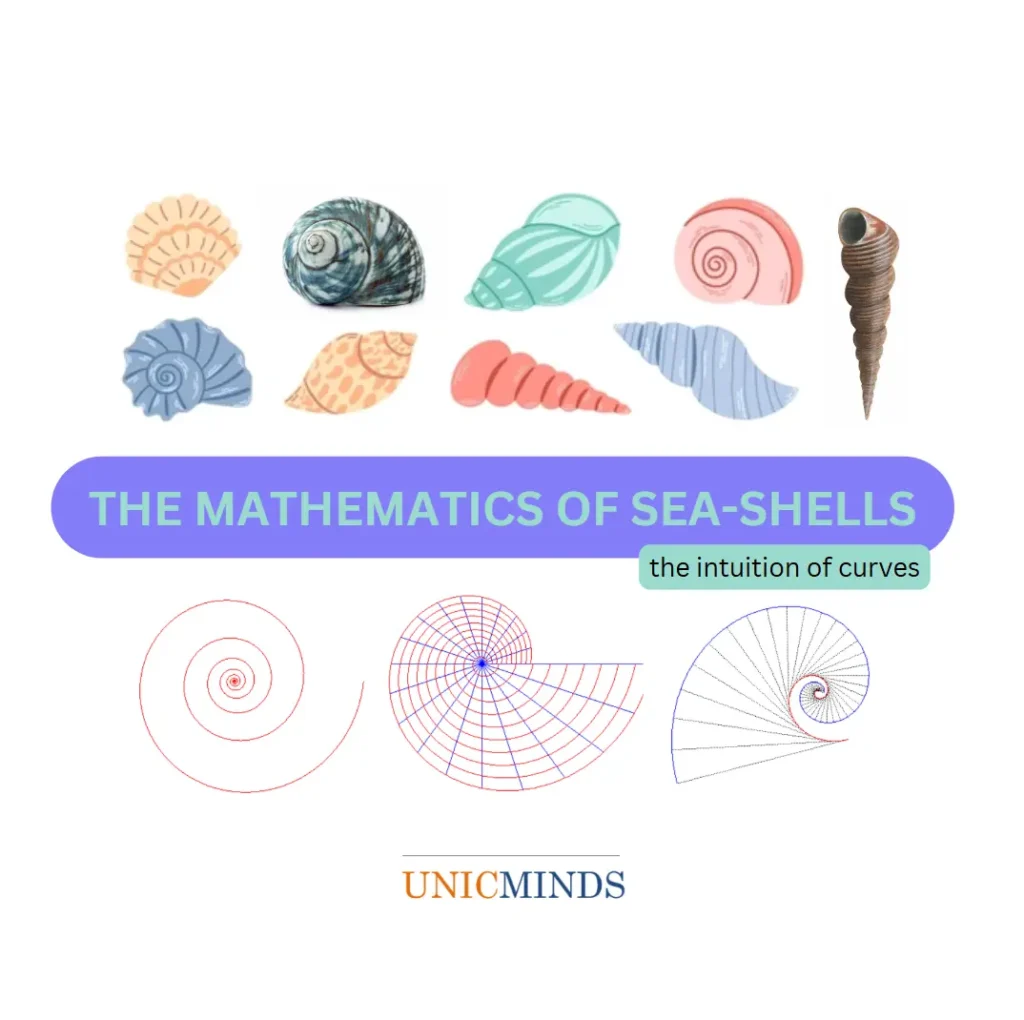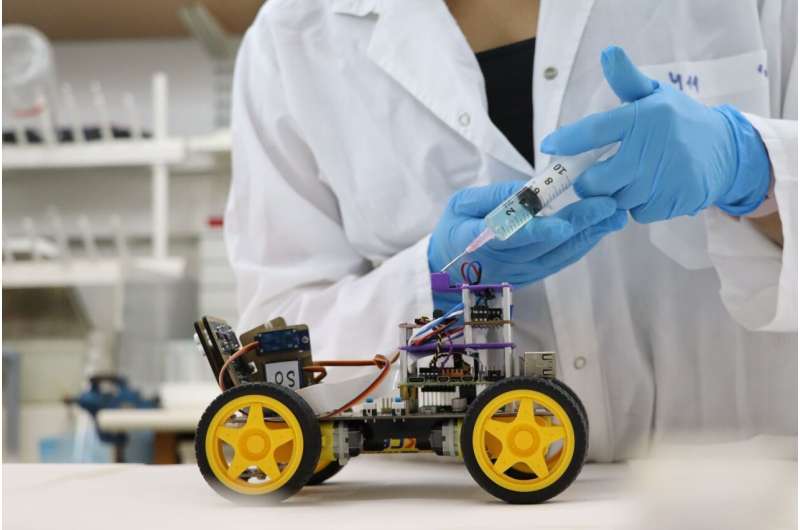The pure beauty of the geometry of the seashells has intrigued people into what leads to their beautiful symmetry. Simply put – Expand, Rotate, and Twist are the three rules that make up the sea shells in this world!
Because sea shells are about curves, we need to understand the intuition of curves.
The Intuition of Curves
When we look at y=x, it means it is a straight line. However, y = x^2 is something that starts to change as x value increases and it looks like a curve. Similarly, y = log x is a curve. Essentially, if you have to mathematically represent curves, you will end up using either exponentials or logarithms or parabolic functions around that axis. Then, what is the intuitive difference between an exponential curve and a logarithmic curve? – In an exponential curve, the changes are slow at first and then the curve changes faster and faster exponentially, whereas in a logarithmic curve, the changes are quick at first and then the changes in the curve become slower and slower. In a parabolic curve, the slope of the curve increases linearly whereas the slope of a logarithmic curve reduces more and more and the slope of an exponential curve increases more and more with time.
Sea Shells are Logarithmic Spirals – Fast initially and Slow Gradually
The base pattern of making sea shells depends on logarithmic spirals. In order to understand logarithmic spirals, we need to first understand logarithms – logarithm turns multiplication into addition. Logarithms and exponents are like opposite to each other.
Logarithmic Spirals are spirals like below that are extremely common in nature. This specific geometry has an evolutionary advantage of adapting to animals of various sizes and growing in proportion with the growth of the animal. You can also logarithmic spirals in the swirls of the pine cones.
The logarithmic spiral has many interesting properties, and shows an interesting connection between φ and e. One way to make a logarithmic spiral: take a golden rectangle, and then put another golden rectangle in it, so that the width of the large rectangle is the length of the small rectangle. Now add another rectangle in the smaller rectangle, and keep adding rectangles for as long as you can. If you inscribe this series of rectangles with a spiral, then that spiral will be a logarithmic spiral. The general equation for logarithmic spirals is r=eθ, and this golden spiral (made with golden rectangles) is a transformation on it.
To graph a polar equation like r=eθ we start with θ equal to zero. From the equation, if we plug in 0 for θ we get a radius of 1. So, our starting point in the (x,y) coordinant system is (0,1). From that point we draw a line by increasing our angle theta and letting it determine the distance r our graphed line should be from the origin. The above equation is special because a given increase in theta always causes the same ratio of increase in r.
The general equation of these spirals is r=eaθ, where a is a constant. If a is positive then the spiral will start at (0,1) and grow outwards as we increase θ. If a is negative, the spiral will get smaller and smaller as θ increases, and spiral into the origin. If a=0, then the exponent of e is always 0, and consequently, r is always 1 regardless of θ. This is the equation of the unit circle.
The curves of sea shells look like a logarithmic spiral of equation below:
ρ = Asin(β) exp (θ cot(α)), where A, α and β are parameters of the model.
The Fun of Playing with Various Models in Matlab
Various mathematical models are required to simulate the growth of the curves of different types of shells along the various axes. The existence of spirals is not limited to only shells in the living world, from flowers to pine cones and shells to wings of a fly, we can see logarithmic spirals in a lot of places.
For children, it is important to get an intuitive understanding and then go deeper into the mathematical representation using calculus as the instrument of exploration. MATLAB is an excellent tool to explore various curve representations in a visual manner and at UnicMinds we recommend using this tool for an enhanced understanding.
The mastery of nature in crafting these designs is an absolute wondrous play of mathematics and physics. We’re still working out many of our applications in fitting new learning models that pan across the animal and the plant kingdom for a universal understanding of nature.
Hope this is useful, thank you.
You may like to read: Teaching Kids About Good Intentions, How Nature Inspired Our Computational Thinking, & Light Diffusion Explained!




